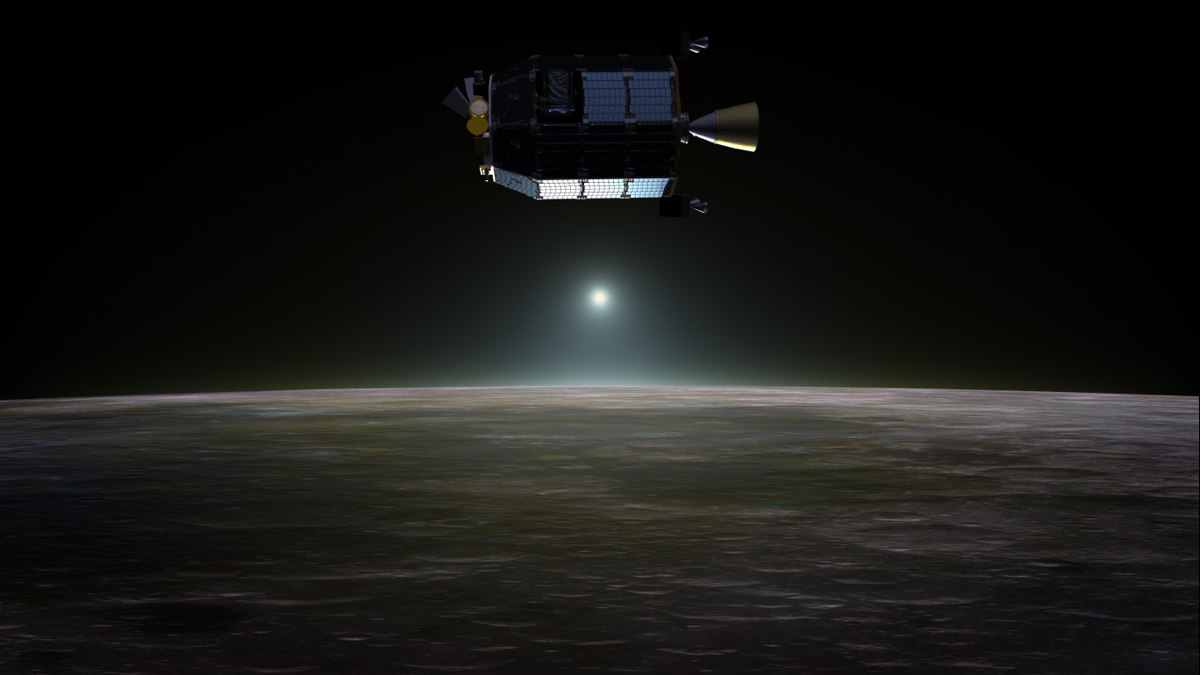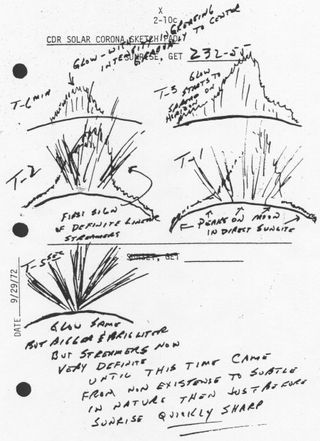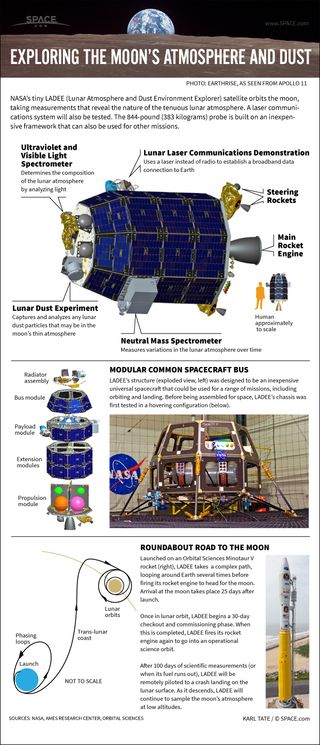NASA Launch Shoots for the Moon from Virginia Tonight: Watch It Online

UPDATE for Sept. 7:NASA's LADEE moon mission has launched on its way. You can see amazing LADEE launch photos by skywatchers here. For our launch story, visit here.
NASA will launch a new spacecraft tonight (Sept. 6) to unlock the mysteries of moon dust and the wispy lunar atmosphere, and you can watch the blastoff live online.
The space agency's Lunar Atmosphere and Dust Environment Explorer, nicknamed LADEE, is poised to liftoff atop a brand-new Minotaur V rocket from Wallops Island, Va., at 11:27 p.m. EDT (0327 Sept. 7 GMT) in what will be the first-ever lunar mission to launch from Virginia. Weather permitting, the nighttime launch may be visible to millions of observers along a wide swath of the U.S. East Coast that stretches from Maine to North Carolina.

But for observers outside the viewing area, NASA has two webcasts to offer live video views of tonight's planned moon shot. You can watch the LADEE launch live on SPACE.com beginning at 9:30 p.m. EDT (0130 GMT), courtesy of NASA TV. [How to Watch NASA's LADEE Mission Launch Tonight]
A second webcast, simulcast at the same time as NASA TV's will be streamed by the agency's NASA Edge team. SPACE.com partner Spaceflight Now is also providing blow-by-blow coverage of LADEE's mission via the Mission Status Center, which will also include a launch webcast feed.
Targeting a moon dust mystery
The $280 million LADEE moon mission (pronounced "laddie," not "lady") will investigate the tenuous atmosphere of the moon and study how moon dust behaves above the lunar surface. Apollo astronauts first spotted a strange lunar glow on the moon's horizon during NASA's lunar landing missions in the 1960s and 1970s, but scientists still do not understand what causes the strange phenomenon.
Get the Space.com Newsletter
Breaking space news, the latest updates on rocket launches, skywatching events and more!
"Sometimes we get a little bit surprised when we start talking about a lunar atmosphere, because most of us were taught in school that the moon doesn't actually have an atmosphere," Sarah Noble, NASA's LADEE program scientist, said Thursday. "It does, but it's very, very thin."

The moon has what scientists call an "exosphere." That is, an atmosphere so thin that its individual molecules don't interact with each other. The Earth has an exosphere too, though it is located hundreds of miles up, higher than the orbit it the International Space Station.
On the moon, this exosphere is extremely close to the surface, making it a good target to study in order to learn how such atmospheres behave over time. Similar exospheres have been spotted on Mercury, the icy moons of planets in the outer solar systems, and even some asteroids, Noble said.
"It turns out to be the most common class of atmosphere we have, and yet it is one we don't really know much about," she added.
Destination: Moon

The LADEE spacecraft carries four instruments to scan the moon's atmosphere in detail and also provide a glimpse into how moon dust moves across the lunar surface. Moon dust, kicked up by lunar impacts, is a concern for scientists since the stuff can clog up systems on future lunar landers, rovers and even stick to the spacesuits of astronauts.
Noble said now is a good time to study the moon's atmosphere and dust environment because it's been months since the last spacecraft slammed into the moon. NASA's twin Grail probes crashed into the lunar surface in December to mark the end of a moon gravity-mapping mission. But China is planning to send a lander to the moon later this year, which could disrupt that lunar calm, she added.
The LADEE spacecraft is about the size of a small car and weighs about 844 pounds (383 kilograms). Once it reaches the moon, which should take a couple of months, the probe is expected to spend about 100 days studying the lunar environment before running out of fuel and crashing into the moon's surface.
The spacecraft is also carrying a high-tech laser communications system as a NASA space technology test. The system promises to offer ultra-fast data transmission rates while consuming less power.
NASA is launching LADEE atop the new Minotaur V rocket built by Orbital Sciences Corp. The company also builds a larger rocket, called Antares, that is scheduled to launch from a different Wallops pad on Sept. 17 to send a commercial cargo ship on its debut trip to the International Space Station.
The eight-story Minotaur V rocket is a five-stage, solid-fueled booster that draws its heritage from the ballistic missiles used by the U.S. military. Because of a treaty between the United States and Russia, rockets like the Minotaur V can only be launched from specific sites, including NASA's Wallops facility.
The Minotaur V will actually lift off from Pad 0B at the Mid-Atlantic Regional Spaceport, which is a commercial spaceport based at NASA's Wallops facility. NASA has a 95 percent chance of good weather for tonight's launch try, but if a delay is required, the space agency could try again between Saturday (Sept. 7) and Tuesday (Sept. 10).
If you live near Virginia's Eastern Shore, there are two locations where you can watch NASA's LADEE launch live tonight. According to a NASA advisory, the launch can be seen from Beach Road between the Chincoteague and Assateague Islands, and from Robert Reed Park on Chincoteague not far from the launch site.
Check out these rocket launch visibility maps for the potential viewing areas all along the U.S. East Coast. The launch's visibility depends heavily on your local weather and unobstructed views.
Editor's note: If you take an amazing photo of the LADEE launch or any other night sky view that you'd like to share for a possible story or image gallery, send photos, comments and your name and location to managing editor Tariq Malik at spacephotos@space.com.
Email Tariq Malik at tmalik@space.com or follow him @tariqjmalik and Google+. Follow us @Spacedotcom, Facebook and Google+. Original article on SPACE.com.
Join our Space Forums to keep talking space on the latest missions, night sky and more! And if you have a news tip, correction or comment, let us know at: community@space.com.

Tariq is the Editor-in-Chief of Space.com and joined the team in 2001, first as an intern and staff writer, and later as an editor. He covers human spaceflight, exploration and space science, as well as skywatching and entertainment. He became Space.com's Managing Editor in 2009 and Editor-in-Chief in 2019. Before joining Space.com, Tariq was a staff reporter for The Los Angeles Times covering education and city beats in La Habra, Fullerton and Huntington Beach. In October 2022, Tariq received the Harry Kolcum Award for excellence in space reporting from the National Space Club Florida Committee. He is also an Eagle Scout (yes, he has the Space Exploration merit badge) and went to Space Camp four times as a kid and a fifth time as an adult. He has journalism degrees from the University of Southern California and New York University. You can find Tariq at Space.com and as the co-host to the This Week In Space podcast with space historian Rod Pyle on the TWiT network. To see his latest project, you can follow Tariq on Twitter @tariqjmalik.